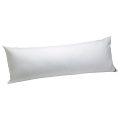
Finding the right kind of pillows for the entire family is not always an easy task since it is not uncommon for people to have different sleeping habits and needs. Fortunately, there is quite a bit of information online that can address the wide variety of needs that you expect. From finding information about different sizes of pillows available, to selecting sites that provide how pillows are made by each manufacturer, there is a vast wealth and variety of info that you can find when you need it. There are so many memory foam pillow benefits. You just need to acquaint yourself with the different types of material used in pillows, for instance in a shredded memory foam pillow and a bamboo memory foam pillow.

One topic of discussion that may not be difficult to find involves the different types of materials used in manufacturing memory foam pillows. When you research this topic, you may find the answer can vary from one manufacturer to another because memory foam materials can differ based on the type of pillows made, and the manufacturer who designs and releases them for purchase. You should also know that each manufacturer can choose their materials based on their specific requirements. If you want to know more about memory foam pillows and their contents, here are some of the more commonly known types that are available on the market.
Natural memory foam
Natural memory foam is composed of rubber tree sap (hevea milk). Even though it feels just like the traditional memory foam that you love, in reality is made without the use of added materials that sometimes comes along with its manufacturing. Also, to ensure this mixture is made with consistent materials, it is formed of two separate layers and molds, so, you can depend on its overall superiority to other kinds of materials used in memory foam pillows and other related products.
Synthetic latex foam
While natural materials may be preferred to other types, they are not the only type that manufacturers use today. In fact, a lot of products in the pillow industry have been made of synthetics. One of the more commonly known involves the use of synthetic latex.
Also, referred to in the industry as polyurethane foam and memory foam, these pillows are made of petroleum by-products, which means they are sometimes made from a mixture of natural and synthetic latex. Therefore, before you purchase memory foam pillows that are made of synthetic latex foam materials, first do your research. When you buy a pillow that states that it is made out of Talalay latex, these pillows may contain either natural foam materials or synthetics. Either way, if you experience allergies when you come in contact with various kinds of synthetic foam materials, it is very important that you understand and can make the distinctions between each.
Difference in materials and quality
Learning the distinctions between the different types of foam materials for pillows can make be very beneficial in a variety of ways. Since the quality can vary greatly from one manufacturer’s brand and material to the next, you cannot only expect to make an informed decision, but a better investment. Sometimes a manufacturer may guarantee their products for several years before the warranties expire. These warranties can be completely useless, however, in cases where the salesperson convinces the customer that the breakdown in the chemical makeup is considered to be normal wear and tear. For instance, if the latex in the pillows begin to break down, the foam pillow may not gain its resilience, thereby, leaving you with a foam pillow that feels like sleeping on a brick.
Grading system
Choosing the right kind of memory foam materials can also be based on other factors, one of which involves the use of the industry’s grading system. Firmness, from hard to soft, is used to determine comfort. The firmness of memory foam is measured by its IFD (indentation force deflection) rating. IFD measures the force, in pounds-force, needed to make a 1” dent in a foam sample 15” x 15” x 4”. IFD ratings for memory foam range between:
- Super soft (IFD 10)
- Semi-rigid (IFD 12)
- Firm (IFD 12-16)
This is, however, not a true measure of a soft or firm feel as a foam of higher IFD but lower density can feel soft when compressed.
Beware of toxic byproducts
Choosing the right kind of memory foam materials is also essential for selecting a non-toxic product. Make sure you are familiar with all of the materials included in the pillow you are considering purchasing. For instance, polyurethane foam is used to oxidize the pillows in order to creates the fluff that people want for their comfort. Unfortunately, the fluff build-up is actually dust, and it can easily be released in the air. Eventually, this dusts can be spread all over the home and to surrounding environments, which can affect the lungs. Breathing in this dust can be very serious over time since the dust itself contains other harmful substances including formaldehyde, styrene, and toluene di-isocyanate (TDI), and antimony. In fact, the length of this list is relatively long since the names can go on and on.
Conclusion
Though there are many different types of memory foam materials available on the market today, it is important to know that some are better than others. Do your research prior to making an investment because is important to protect yourself and your family by knowing which foam materials are chemically based. According to research that has been done, the best choice that can be made is 100% natural latex (without fillers) because they are the most durable, healthier, and the most comfortable memory foam materials for pillows.
Read about some of the top rated memory foam pillows here. Best Memory Foam Pillow



